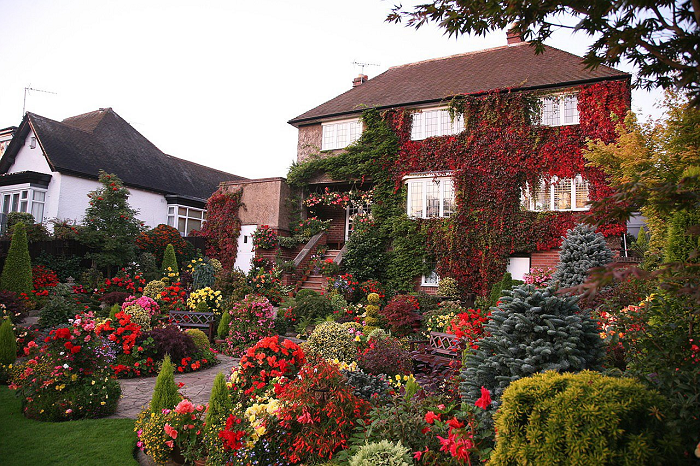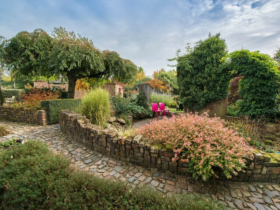Before the proclamation of the Dutch Republic (1581), garden art in the country developed under the influence of the Italian Renaissance.
But the landscape style reached its real dawn in the 17th and 18th centuries – during the Baroque era. Most gardeners of that time were guided by the pompous and sophisticated parks of Versailles. A striking example of this is the royal garden of Het Loo in Apeldoorn.
Interesting: it was during the Baroque era that a wave of tulip fever swept across Europe, when you could get a whole carriage for one bulb.
The Dutch garden is characterized by rational and orderly placement of plants in a small area. Here every meter is thought out and planned as much as possible. The Dutch love for order, comfort and simplicity formed the main features of the style:
- simplicity and symmetry (clear composition with clearly defined boundaries);
- rationality (efficient use of space and lighting);
- geometric shapes and straight lines (strict outlines of paths and plantings);
- neatness and cleanliness (trimmed lawns, bushes and absence of debris and fallen leaves);
- environmental friendliness (predominance of natural materials;
- colorful palette (bright and variegated plant varieties, decorative all year round);
- compactness (garden objects and small plantings).
A Dutch-style garden is a good compromise between the rigor of French formal gardens and the spontaneity of natural English curtains. But it also has its own unique charm of a country estate with cute hand-made decor and friendly low hedges.






